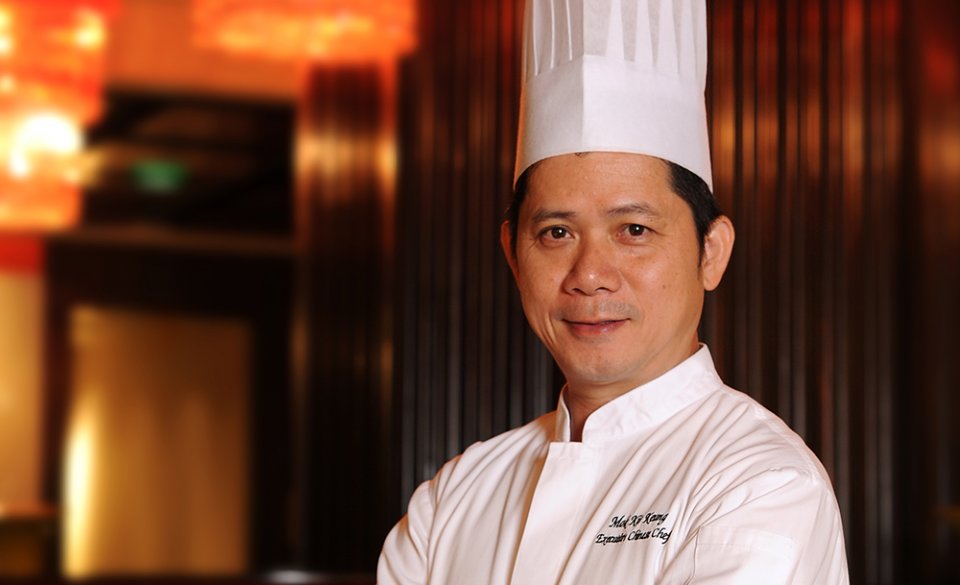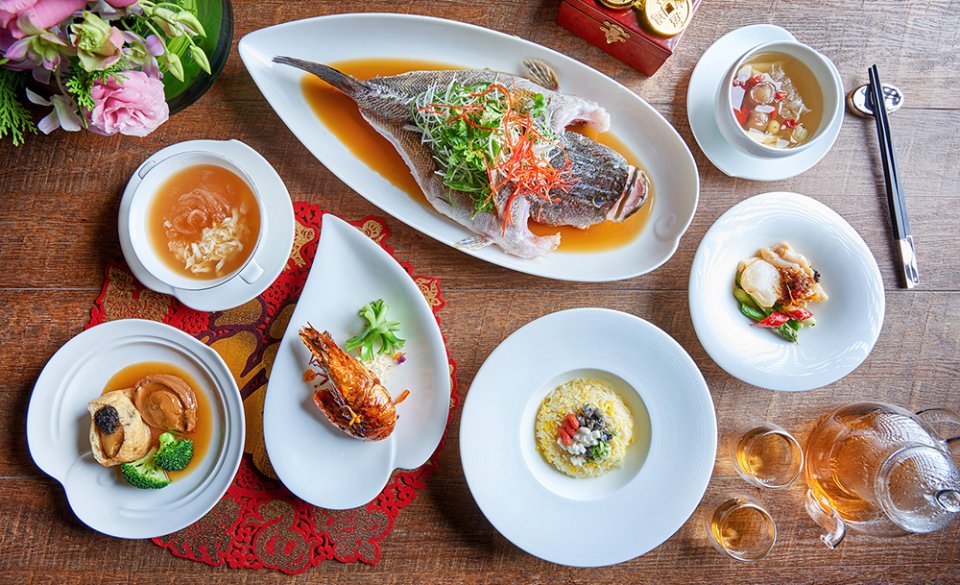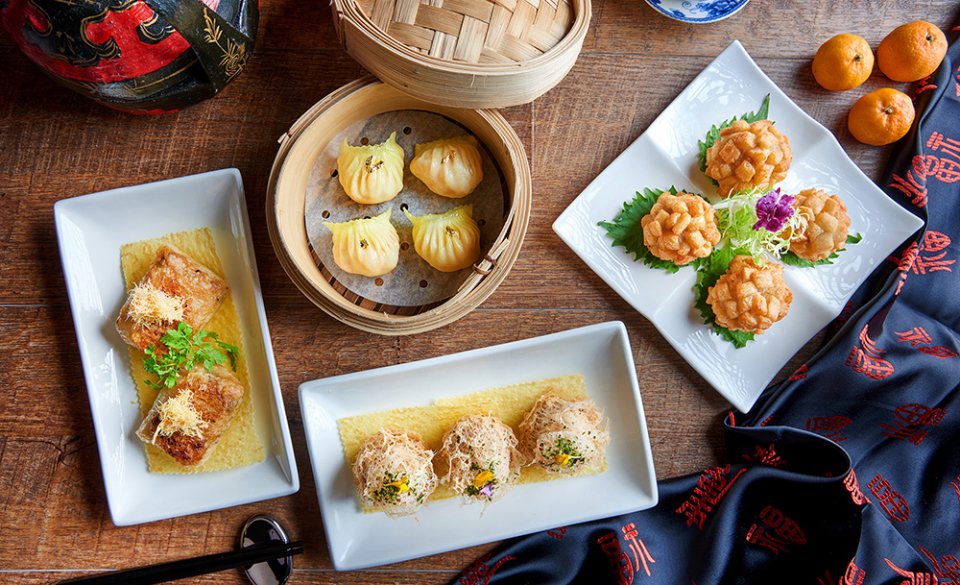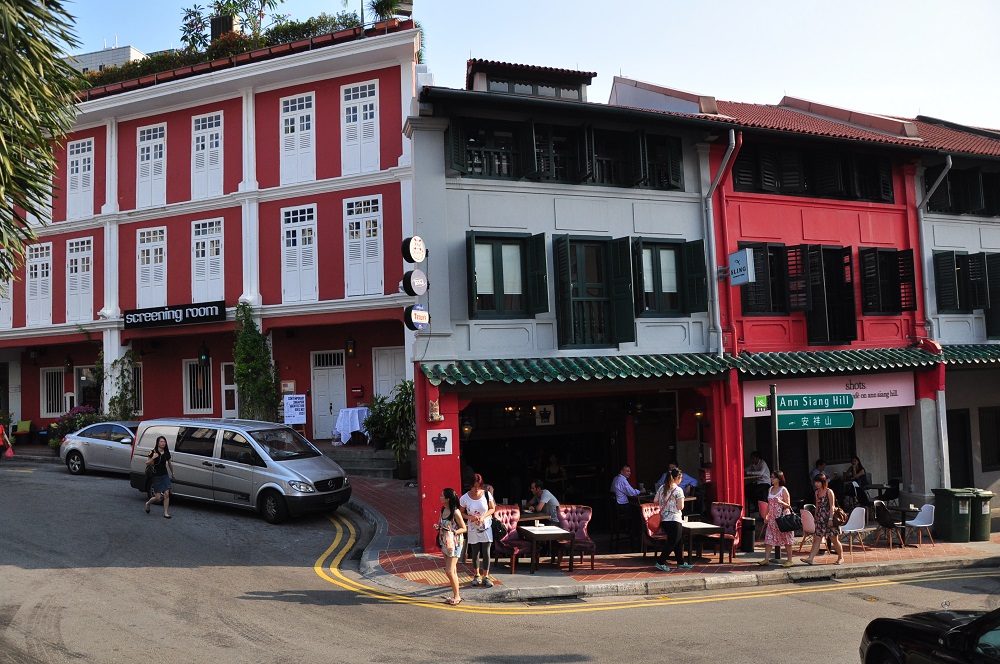Shang Palace’s Mok Kit Keung is probably Singapore’s friendliest Michelin-starred Cantonese chef. He takes time off his busy Chinese New Year schedule to share with us his pet peeves about cooking in Singapore, and how to turn your CNY reunion dinner into a five-star affair.
He’s got two Michelin stars pegged to his name—which is why Chef Mok Kit Keung will be spending Chinese New Year at work instead of at home with family.
“No choice,” shrugged the 54-year-old Cantonese chef, who heads the kitchen at Shangri-La Singapore’s premier Chinese restaurant, Shang Palace. “I always eat reunion dinner in office.”
But don’t feel too bad for him. In his 40 years of cooking, Chef Mok has long since made accommodations for the Lunar New Year—arguably his busiest season. “Usually (my family has) reunion dinner before Chinese New Year,” he reassures. “Actually at home we eat very simply—just one soup, one meat, one fish, and one vegetable.”

Chef Mok Kit Keung
The Hong Kong-born chef has a surprisingly tight relationship with the culinary scene here. He first started as a kitchen helper at 13 working for his uncle, who was a head chef in a local restaurant in Hong Kong. At 28, he was introduced to our local Tung Lok Group and invited to Singapore, where he ended up working for 19 years (his last position being Chef de Cuisine at Marina Bay Sands). In 2011, he was invited back to Hong Kong, to head the Shang Palace at Kowloon Shangri-La (KSL). At the time, the hotel restaurant had just lost one of its two Michelin stars.
“When I interviewed with the Kowloon General Manager, he asked me, ‘可以拉多一粒吗?’ (Can you bring the lost star back?),” said Chef Mok. “I said I try lah.”
His modesty was unfounded. Within the year of Chef Mok’s arrival, the restaurant recovered its lost star, and has maintained a two-Michelin star status till today. Now he’s back in Singapore, a newly minted citizen who’s fully imbibed the local vernacular; ready to work his Michelin magic on our local scene.
Ironically, the Shang Palace in Singapore is the first in the whole Shangri-La brand—yet has no Michelin stars to its name. Is Chef Mok hoping to earn a star for the Shang Palace here then?
“I hope lah,” he said, the ol’ humility surfacing once again. “It’s not easy, because every year the auditor is different. So I tell my staff, every guest that comes to Shang Palace to dine is a VIP guest; they’re all the boss.”
And even if they don’t happen to be secretly reviewing the food for stars, there’s no loss in serving good food. Putting out quality plates is Chef Mok’s driving motto. “It’s important that I use my heart to do each dish; everything is about doing my best.”

Shang Palace Chinese New Year menu
Still, it won’t be easy making it onto the local Michelin Guide’s coveted list, which comes out in July this year. Chef Mok admits that being in Singapore does have its hindrances. The biggest obstacle—a lack of ingredients in local markets.
When asked what ingredients there are in Singapore that are by his standards “good quality”, he replied, with slight hesitation, “Actually, err, none.”
“In Hong Kong it’s easy to find ingredients everywhere, because China is right behind and provides many things, many foreign items,” he explained, adding that he gets first pick of seasonal ingredients when walking the markets, especially live fish and seafood.
“Here it’s difficult; there’s only Chinatown, and Chinatown [has] no fish already.”
As a result, many of his signature dishes on the Shang Palace menu feature imported ingredients. His honey glazed BBQ pork (or charsiew) uses Iberico pork from Spain; the foie gras-stuffed sea cucumbers are from Japan, though flown in from Hong Kong. They’re imperative to the quality of Shang Palace’s dishes.
If it seems bizarre for a Cantonese chef to cook with foreign ingredients, consider it Chef Mok’s specialty. His time spent in Singapore learning and working with Western chefs ended up being a definitive period in his career; he now enjoys using Western ingredients to do traditional dishes.
The unexpected take sits well with those looking to taste traditional Cantonese cuisine, refreshed. Shang Palace’s Chinese New Year dim sum menu, for example, serves classics with a luxury twist—like soup dumplings stuffed with fish maw, Alaskan crab meat, and har gao with champagne.

Shang Palace Chinese New Year dim sum menu
At the end of the day, however, Chef Mok stressed that though he strives to innovate, he will still stick to traditional cooking styles. “Cantonese dishes are about keeping the dish the same, no matter how many times you cook it,” he added. “Traditional is traditional.”
So does he have what he needs to whip up a traditional, Michelin-starred menu for Chinese New Year feasters? For sure, even if it means relying heavily on imports. Right now, the only way to overcome the ingredients problem is to keep sourcing, and looking for quality substitutes to replace what he needs.
If there’s any consolation to us, Chef Mok says that Singapore “has already improved a lot from when [he] was here 20 years ago”. His favorite place to get ingredients from is upscale supermarket The Marketplace.
“They import good items,” he mused. “I can’t change the chicken, but maybe I can cook it in another way.”
In any case, a good chef won’t be hindered by something as secondary as ingredients. After all, great tasting dishes can come from the simplest of produce. With luck, he’ll be seeing stars this July.





